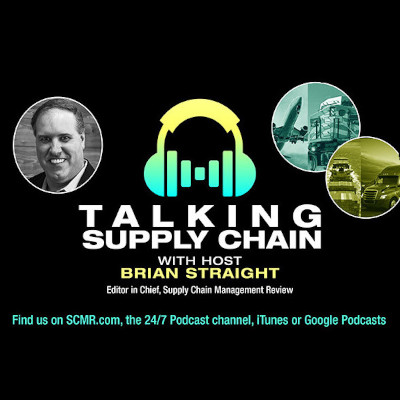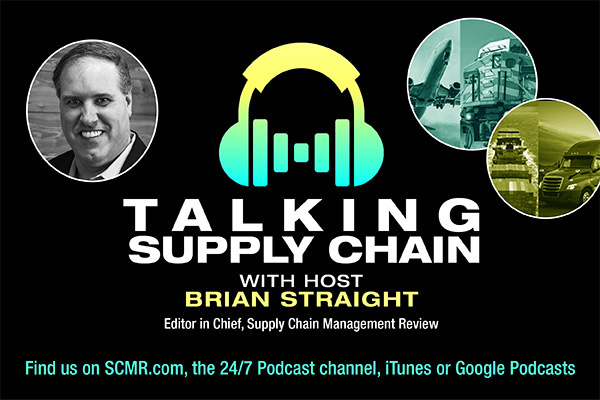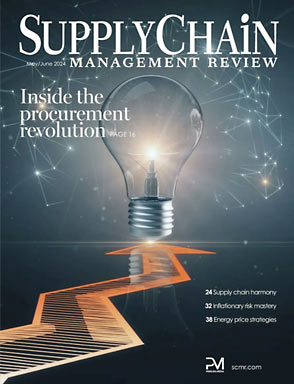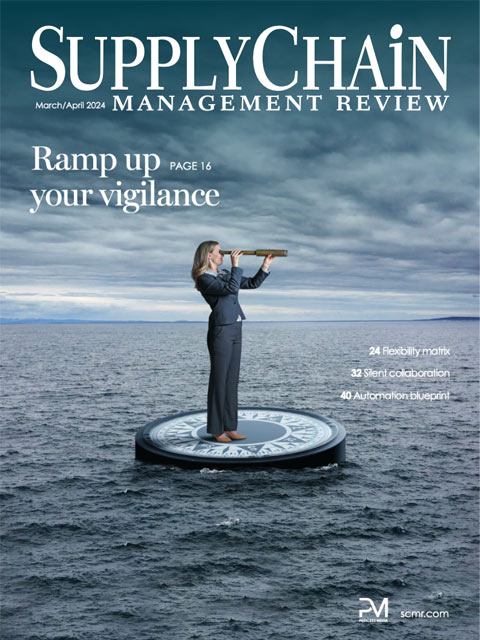Sorry, but your login has failed. Please recheck your login information and resubmit. If your subscription has expired, renew here.
March-April 2024
Part of any supply chain manager’s job is risk mitigation. Thanks to COVID-19 and the ensuing, and constant, disruptions that have followed, more companies are now focused on reducing their exposure to supply chain chaos. We’ve heard a lot about diversification in recent years—having multiple suppliers in multiple locations. But risk mitigation goes far beyond diversification, and the recent case of Boeing should serve as a cautionary tale not to avoid those other risks. Browse this issue archive.Need Help? Contact customer service 847-559-7581 More options
This column topic was originally discussed in my November 2013 Insights column. “Demand-shaping with supply in mind” dealt with activities that are primarily the responsibility of marketing and sales management. However, while not responsible for demand-shaping per se, supply planning managers ought to play two, not just one, important roles. Of course, the first of these is ensuring that supply is in place to meet all anticipated future unconstrained demand. The second, often overlooked, is advocating that “demand-shaping be done with supply in mind” whenever there are significant supply shortages. This role involves a better alignment of demand with potential on-hand, on-order, and procurable supply. Largely aimed at increasing profitability, revenue and asset utilization. Instead of just matching supply demand with no objective in mind.
Pull versus push supply chains
In 1998, at one of my first talks at a supply chain conference, I discussed the concepts of manufacturing “push” versus consumer “pull” supply chains. Back in the day, manufacturing organizations had a long history of pushing out finished goods for sales & marketing organizations to sell. Too often not considering what consumers might really demand. At the time I often used the phrase that supply chains were moving from “selling what one makes, to selling what one expects to sell.” Prior to the adoption of sales and operations planning (S&OP) processes in the mid-1980s, manufacturing planners would not give much credence to sales plans nor forecasts. S&OP’s use of an independent baseline unconstrained demand forecast, to start the S&OP process, created a trend away from push and toward pull supply chains—later termed demand-driven supply chains.
Future supply will require push as well as pull
For the most part, today’s supply-side planning processes are pull-based and assume that infinite supply is obtainable. They are focused on matching supply plans to meet unconstrained demand forecasts. Therefore, for example, once production and inventory plans are set, these …

This complete article is available to subscribers only.
Log in now for full access or start your PLUS+ subscription for instant access.
SC
MR
Sorry, but your login has failed. Please recheck your login information and resubmit. If your subscription has expired, renew here.
March-April 2024
Part of any supply chain manager’s job is risk mitigation. Thanks to COVID-19 and the ensuing, and constant, disruptions that have followed, more companies are now focused on reducing their exposure to supply chain… Browse this issue archive. Access your online digital edition. Download a PDF file of the March-April 2024 issue.This column topic was originally discussed in my November 2013 Insights column. “Demand-shaping with supply in mind” dealt with activities that are primarily the responsibility of marketing and sales management. However, while not responsible for demand-shaping per se, supply planning managers ought to play two, not just one, important roles. Of course, the first of these is ensuring that supply is in place to meet all anticipated future unconstrained demand. The second, often overlooked, is advocating that “demand-shaping be done with supply in mind” whenever there are significant supply shortages. This role involves a better alignment of demand with potential on-hand, on-order, and procurable supply. Largely aimed at increasing profitability, revenue and asset utilization. Instead of just matching supply demand with no objective in mind.
Pull versus push supply chains
In 1998, at one of my first talks at a supply chain conference, I discussed the concepts of manufacturing “push” versus consumer “pull” supply chains. Back in the day, manufacturing organizations had a long history of pushing out finished goods for sales & marketing organizations to sell. Too often not considering what consumers might really demand. At the time I often used the phrase that supply chains were moving from “selling what one makes, to selling what one expects to sell.” Prior to the adoption of sales and operations planning (S&OP) processes in the mid-1980s, manufacturing planners would not give much credence to sales plans nor forecasts. S&OP’s use of an independent baseline unconstrained demand forecast, to start the S&OP process, created a trend away from push and toward pull supply chains—later termed demand-driven supply chains.
Future supply will require push as well as pull
For the most part, today’s supply-side planning processes are pull-based and assume that infinite supply is obtainable. They are focused on matching supply plans to meet unconstrained demand forecasts. Therefore, for example, once production and inventory plans are set, these …
SC
MR


More Inventory Management
- When disaster strikes, the supply chain becomes the key to life
- Why we can’t ignore inventory rightsizing in industrial sectors
- Building resilience in manufacturing
- One door closes, a better one opens
- AI liftoff delayed?
- The key to good data management? Start with good data
- More Inventory Management
Latest Podcast

 Explore
Explore
Procurement & Sourcing News
- AI-driven sourcing: Why the speed of change is going to only accelerate
- A Silk Road city
- U.S.-bound containerized import shipments are up in June and first half of 2024
- Boeing turned to Fairmarkit, AI to help land its tail spend
- When disaster strikes, the supply chain becomes the key to life
- A smarter approach to sustainability is vital for healthy, resilient supply chains
- More Procurement & Sourcing
Latest Procurement & Sourcing Resources

Subscribe

Supply Chain Management Review delivers the best industry content.

Editors’ Picks





